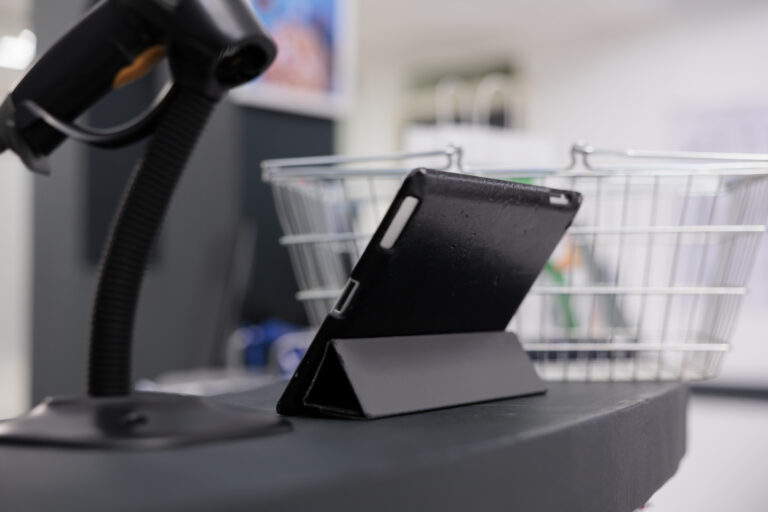Today’s consumers are inundated with choices when it comes to their retail decisions. From selecting brands, and evaluating offers, to deciding between online or in-store purchases, the retail landscape offers more variety than ever before. In 2023, many retailers saw the impact of dwindling customer loyalty in customer churn analysis in retail. This was highlighted by a report by MoEngage that found that 45% of both retail and e-commerce brands experienced churn rates in excess of 51%. Broken down, this was 18% seeing between 51 % and 60%, and 14% seeing a rate of between 61% and 70%.
The shifting landscape indicates that the traditional buying cycle has been disrupted, making churn—a measure of customer attrition—a critical metric for understanding what truly drives and retains customers in this new age of retail.
Traditionally customer churn is a difficult KPI to measure when you are operating outside of a digital field. Where eCommerce and online shops have data automatically generated from every persona and purchase, even if that information is anonymous, trying to track in-store interactions and churn can be quite difficult.
However, with the right tools and techniques, businesses can identify patterns, anticipate churn, and devise strategies to maintain a loyal customer base.

Why doing customer churn analysis in retail makes a difference
Churn is more than just a number, and while having that number gives retailers a starting point to work from, it offers a quick health measurement of how the business is doing. If you have a high churn rate, but your customer surveys always comment on great customer service, then you can isolate other areas for improvement.
On the other hand, if your churn rate is low, but there is a steady decline in the average transaction value or repeat purchases are dipping, this can suggest that while your customers are staying loyal, something else isn’t quite right. You can then start to look at external influences such as the market. It might also point towards external competitors luring away your customers with more attractive deals or new product launches.
By keeping informed of their churn rate, retailers can then allocate resources such as marketing budgets more carefully. If churn rate is high, then more focus can be put into customer retention programs such as loyalty schemes, feedback systems and improved post-purchase customer support.
It also allows the business to become proactive rather than reactive. One of the biggest benefits of having access to data is not just historic and current information, but prediction and forecasting. By being able to see the “bigger picture” retailers can identify issues before they happen, and prevent small problems for customer retention becoming much bigger ones.
How to measure customer churn
Measuring churn in-store is not impossible, and in fact can come with a huge range of other benefits as well.
Calculating your churn rate is a straightforward process, facilitated by the following formula:
(churned customers / total customers at the outset of a given period) x 100
For instance, suppose you started the year with 500 customers, but 200 of them departed during the year. Using the formula, you would calculate 200/500, resulting in 0.4. Consequently, your customer churn rate would stand at 40%.
Here’s a step-by-step breakdown of the process:
1. Determine the time frame for your analysis (e.g. a quarter or a year).
2. Establish the initial number of customers you had at the commencement of that chosen period.
3. Determine the count of customers who churned during that specific period.
4. Divide the number of churned customers by the number of customers at the period’s commencement.
5. Multiply the resulting quotient by 100 to obtain your churn rate.
refive stands out as the go-to solution for brick-and-mortar retailers aiming to enhance customer retention. At its core is a simplified data capture process: customers at the checkout scan a QR code for an ereceipt, providing as much or as little information as they’re comfortable with. This ingenious approach respects privacy while enabling refive to track even anonymous in-store purchases. refive then recognises if the same anonymous customer shops again with this brand or not. Armed with this data, retailers can not only perform churn analysis but also engage customers via the ereceipt. It can can display tailored in-store offers, ensuring each visit feels personal and valued.

Taking charge of in-store churn
Understanding the significance of in-store churn is one aspect, but effectively addressing it is quite another.
Here are some actionable steps retailers can employ to ensure their customers are not only satisfied but consistently returning. refive supports all of these as well:
- Personalised Shopping Experience: Utilise purchase histories to suggest relevant products. For instance, if a customer recently purchased a handbag, consider highlighting matching accessories on their next visit.
- Efficient QR Code Sign-ups: Ensure a seamless sign-up process for customers. Perhaps offer an immediate incentive for their participation, such as a discount on their subsequent purchase.
- Exclusive In-store Offers: Demonstrating value to your customers is one of the most important ways of preventing churn. By creating in-store-only promotions you can cater specifically to regular visitors.
- Post-purchase Support: Extend your service beyond the sale. Offering care advice for purchased products or reminding customers of warranty details can significantly enhance their shopping experience and prevent returns.
- Loyalty Rewards: Recognise and reward regular customers. Consider introducing a digital loyalty programme that provides tangible benefits for frequent shoppers.
- Open Feedback Channels: It’s vital to understand customer sentiments. Establish a system for collecting feedback, and more importantly, demonstrate responsiveness to their inputs.
- Engaging In-store Events: Organise events that showcase new product launches or provide enriching workshops. This adds another layer to the traditional shopping experience.
The future of in-store analytics
Understanding customer churn analysis in retail is fundamental for success, no matter where in the world you are based. For brick-and-mortar retailers, implementing tools such as refive offer a powerful way to capture and analyse data that would have once been considered impossible. Being able to leverage digital-level data, with physical in-store shopping allows for insights that are valuable for forging a stronger relationship with customers. This transparency of churn also allows retailers to make data-driven business decisions, assisting with growth for the business and happiness for the customer.
Ready to start taking control of your in-store churn? Do that and so much more by booking a demo with refive today.







